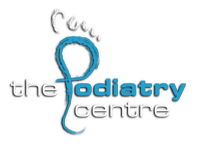Is your childs sitting position hindering their development?
Children’s bodies are medically considered to be very elastic. Their bones, ligaments, and muscular structures are far from set in stone. This is often a blessing and a curse in terms of their development as something as simple as the style of sitting that your child adopts can impact on the way their young bodies develop. The position often observed and well documented to cause issues is referred to as the ‘W-sitting’ position.
Children often prefer the w-sitting position when performing activities on the floor such as playing with toys and colouring in because it enables them to focus on whatever is in front of them without enabling swaying or shifting of the weight of their body to the left or right. This would be particularly preferred by children who are in the early stages of their development as most of their time would be focusing on their toy or activity rather than the manner in which they are sitting.
The reason w-sitting can be detrimental to the development of the child’s body is owed largely to the fact that the position puts stresses on particular joints, muscles, and tendons which over a long period of time may result in alignment issues. Some of the primary issues which may result include:
- Tightening of the muscles around the hips, knees, and ankles which can reduce the child’s flexibility and potentially predispose them to injuries or structural malalignment during physical activity.
- Weakening of the core stabiliser muscles. The core muscles are important in stabilising the body during many motions both during weight bearing and sitting. On primary example is a child’s ability to get up off the ground. Weakened core stabilisers would mean that children might find it harder to perform simple tasks that require this group of muscles.
- Long-term balance and flexibility issues.
Preventing children from w-sitting is largely done by either not allowing it to become a habit or breaking the habit. If a child is found to be w-sitting, the adult should make every effort to teach the child alternative methods of sitting such as the ‘o-sitting’ and ‘legs crossed’ methods. Avoiding frustrations with a child’s inability to break the cycle of w-sitting is important as parents often need to realise that the child is unaware that they are doing anything hazardous and that they are being asked to change a routine that appears relatively normal to them. In extreme cases, supporting seats and braces are available to aid in improving the child’s sitting position.
A visit to a podiatrist for advice or treatment might help break the cycle of w-sitting and help set your child up for healthy and happy development.
Dr Anel Kapur (Podiatrist)
